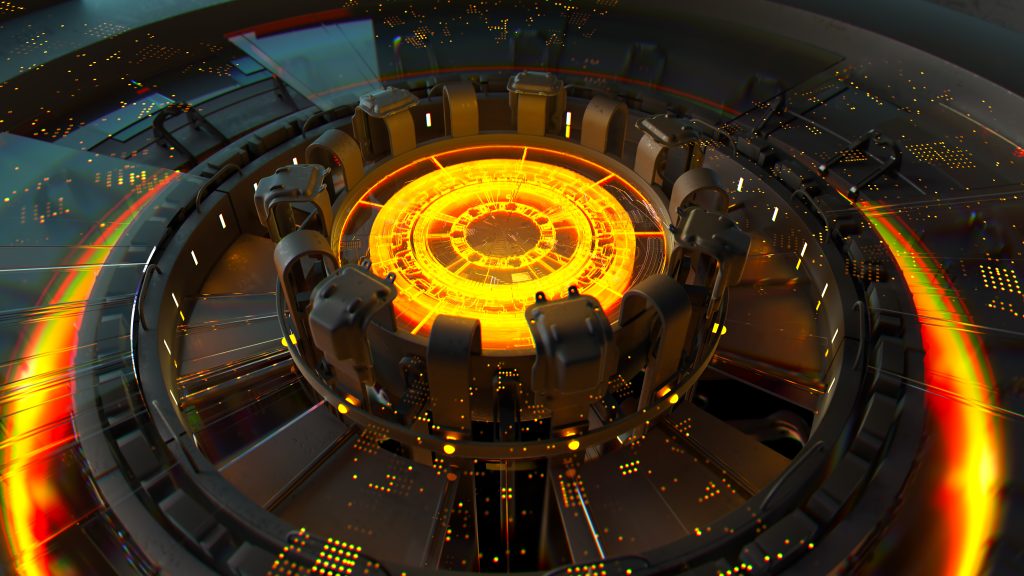Curious about how nuclear reactors work and produce electricity? Let’s explore the fascinating world of nuclear energy and delve into the inner workings of a reactor. Discover how fuel rods, coolants, and control rods play crucial roles in controlling the reaction rate and generating heat. We’ll also compare different types of reactors, like pressurized water reactors (PWRs) and boiling water reactors (BWRs). Unravel the mysteries and gain a deeper understanding of this essential source of low-carbon electricity.
Nuclear Fission and Reactor Operation
Understanding the process of nuclear fission and how a reactor functions is crucial for comprehending the operation of a nuclear power plant. Nuclear fuel rods, made of ceramic pellets, play a vital role in the reactor. These fuel rods are stacked together and immersed in water, which serves as both a coolant and moderator. The moderator material slows down the neutrons released during fission, while the coolant removes the heat generated by the fission process. Control rods, made of neutron-absorbing material, are used to adjust the reaction rate. The heat produced by fission turns water into steam, which then drives a turbine to generate electricity.
However, in the event of a core meltdown, the fuel rods can be damaged, potentially leading to the release of radioactive materials. To prevent this, proper nuclear waste management is crucial. Nuclear waste, including spent fuel rods, must be carefully handled and stored in secure facilities to ensure the safety of both humans and the environment.
Types of Light-water Reactors in the United States
Now let’s delve into the different types of light-water reactors in the United States and how they contribute to the operation of nuclear power plants. The majority of commercial reactors in the United States are pressurized water reactors (PWRs), accounting for over 65% of the total. PWRs pump water into the core under high pressure to prevent boiling, and heat the water in the core to generate steam that turns an electric generator. On the other hand, boiling water reactors (BWRs) account for about a third of US reactors and produce steam directly inside the reactor vessel. Steam is then fed to a turbine to generate electricity.
To better understand the advantages of PWRs versus BWRs, let’s take a look at the following table:
| PWRs | BWRs |
|---|---|
| Use a heat exchanger to generate steam | Produce steam directly in the reactor vessel |
| Use high pressure to maintain water in a liquid state | Do not require high pressure |
| Most common type of reactor in the US, accounting for over 65% | Account for about one-third of US reactors |
When it comes to challenges in nuclear reactor safety, both PWRs and BWRs face similar risks such as the release of radioactive materials and the potential for accidents. However, advancements in technology have paved the way for the future of advanced nuclear reactors, which aim to address these safety concerns and improve efficiency.
In terms of environmental impacts, light-water reactors have several advantages. They produce electricity without emitting greenhouse gases, which helps in the fight against climate change. However, they do generate nuclear waste, which requires proper management and disposal.
Lastly, economic considerations play a crucial role in the deployment of nuclear reactors. Factors such as construction costs, operation and maintenance expenses, and the availability of fuel sources all impact the feasibility of nuclear power plants.
Pressurized Water Reactors (PWRs)
To better understand the operation of nuclear power plants, it is important to explore the subtopic of Pressurized Water Reactors (PWRs) and how they function. PWRs have several advantages over Boiling Water Reactors (BWRs).
Advantages of PWRs over BWRs:
- PWRs use a heat exchanger to generate steam, while BWRs produce steam directly in the reactor vessel.
- PWRs use high pressure to maintain water in a liquid state, while BWRs do not require high pressure.
- PWRs are the most common type of reactor in the US, accounting for over 65% of reactors. BWRs account for about one-third.
Challenges in PWR Operation:
- PWRs require a robust containment structure to ensure safety and prevent the release of radioactive materials.
- The high pressure and temperature conditions in PWRs put significant stress on the reactor components, requiring regular maintenance and inspections.
Innovations in PWR Design:
- Advanced PWR designs are being developed to improve safety, efficiency, and fuel utilization.
- Enhanced passive safety features, such as passive cooling systems, are being incorporated into new PWR designs.
Environmental Impact of PWRs:
- PWRs produce electricity without greenhouse gas emissions, contributing to a low-carbon energy mix.
- However, the disposal of nuclear waste generated by PWRs remains a challenge, requiring proper management and containment.
Future of PWR Technology:
- Research and development efforts are focused on improving the safety, efficiency, and sustainability of PWRs.
- Advanced PWR designs, including small modular reactors, are being explored as a potential future option for nuclear energy.
Boiling Water Reactors (BWRs)
The efficiency and functionality of nuclear power plants can further be explored by delving into the subtopic of Boiling Water Reactors (BWRs) and their operation. BWRs are a type of light-water reactor that directly produces steam inside the reactor vessel. This eliminates the need for a separate heat exchanger, making the system simpler and more efficient. One advantage of BWRs is their higher thermal efficiency compared to Pressurized Water Reactors (PWRs). BWRs can convert a larger portion of the reactor’s thermal energy into electricity, resulting in a higher overall efficiency.
BWRs also incorporate several safety features to ensure the secure operation of the reactor. These include emergency core cooling systems, which can provide additional cooling to prevent overheating in case of a loss of coolant accident. Additionally, BWRs have automatic shutdown systems that can quickly shut down the reactor in case of any abnormalities.
In terms of fuel management, BWRs use fuel assemblies that contain multiple fuel rods. These assemblies can be easily replaced during refueling outages, allowing for continuous operation of the reactor.
Looking towards the future, BWRs are expected to play a significant role in nuclear power generation. Advanced designs and improvements in safety features are continuously being developed to enhance the efficiency, safety, and sustainability of BWRs. With ongoing research and development, BWRs have the potential to contribute to a clean and reliable energy future.
Comparison of PWRs and BWRs
Comparing PWRs and BWRs reveals key differences in their design and operation. A comparison analysis of these two types of light-water reactors involves efficiency assessment, safety considerations, and operational differences.
Efficiency assessment:
- PWRs use a heat exchanger to generate steam, while BWRs produce steam directly in the reactor vessel.
- PWRs use high pressure to maintain water in a liquid state, while BWRs do not require high pressure.
Safety considerations:
- PWRs and BWRs have different safety features and systems in place to prevent accidents and mitigate their consequences.
- PWRs have a containment structure surrounding the reactor to protect it from outside intrusion, while BWRs do not have a separate containment structure.
Operational differences:
- PWRs are the most common type of reactor in the US, accounting for over 65% of reactors. BWRs account for about one-third.
- PWRs pump water into the core under high pressure to prevent boiling, while BWRs produce steam directly inside the reactor vessel.
Performance evaluation:
- PWRs and BWRs have been evaluated for their performance in terms of electricity generation, safety, and efficiency.
- Both types of reactors have undergone continuous improvements and advancements to enhance their performance and meet regulatory standards.
How Nuclear Reactors Work
In understanding how nuclear reactors work, let’s delve into the process of fission and the controlled release of energy from splitting atoms. Nuclear reactors are designed to house and control nuclear fission, where atoms are split and energy is released. The fuel used in nuclear reactors is typically uranium, which is processed into small ceramic pellets and stacked into fuel rods. These fuel rods are then immersed in water, which acts as both a coolant and a moderator. The controlled rate of the reaction is achieved by inserting or withdrawing control rods made of neutron-absorbing material.
The heat generated by the fission process turns the water into steam, which then spins a turbine to generate electricity. This process is known as the nuclear reactor fuel cycle. The coolant system, consisting of water circulating through the core, transfers heat away from the reactor. The control system, which includes the control rods, regulates the speed and heat of the nuclear reaction.
Nuclear reactor design incorporates various safety measures to ensure the safe and efficient operation of the reactor. These measures include containment structures to protect the reactor from outside intrusion and to protect people from radiation. Core melt localization devices are also installed in newer reactors to catch melted core material in case of a major accident.
Components of a Nuclear Reactor
Let’s now examine the components of a nuclear reactor. Control rods, made with neutron-absorbing material, are used to regulate the rate of the nuclear reaction. The coolant, typically water, circulates through the reactor core to transfer heat. The fuel, usually uranium arranged in fuel rods, undergoes fission to release energy. Finally, the reactor vessel contains the core and coolant, ensuring the safe operation of the reactor.
Control rods
Adjusting the reaction rate, control rods play a crucial role in the operation of a nuclear reactor. These rods are designed with materials that absorb neutrons, such as boron or cadmium. When inserted into the reactor core, they reduce the number of free neutrons available for fission, thus decreasing the rate of the reaction. Control rods are carefully inserted or withdrawn to maintain the desired reactivity level and ensure safe and stable operation of the reactor. The movement of control rods is controlled by hydraulic systems or electromagnets, allowing for precise control of the reaction rate. The design and materials of control rods are crucial in ensuring their effectiveness in regulating the fission process.
Coolant
To ensure safe and efficient operation of a nuclear reactor, the coolant, which circulates through the core, plays a critical role in removing heat generated by the fission process while maintaining the stability of the reactor. The coolant is responsible for transferring the heat from the reactor core to the heat exchanger, where it is converted into steam to generate electricity. The coolant system is designed to optimize the flow of coolant and control its temperature to ensure maximum efficiency. Regular maintenance of the coolant system is essential to prevent any disruptions in its operation. Coolant alternatives are also being explored to improve efficiency and safety. Table below provides a comparison of different aspects related to coolant in a nuclear reactor:
| Aspect | Coolant Efficiency |
|---|---|
| Coolant Alternatives | Ongoing research |
| Coolant Temperature Control | Precise regulation |
| Coolant Flow Optimization | Maximizing efficiency |
| Coolant System Maintenance | Regular checks |
Fuel
The fuel, consisting of uranium pellets, is a crucial component of a nuclear reactor, as it provides the source of energy for the fission process. The fuel undergoes a series of processes and procedures to ensure its efficiency and safety.
- Nuclear fuel fabrication: This involves the production of uranium pellets, which are then stacked into fuel rods. The fuel rods are bundled together to form fuel assemblies, which make up the reactor core.
- Nuclear fuel recycling: After being used in the reactor, nuclear fuel can be recycled to extract any remaining energy. This process involves separating and reprocessing the fuel to recover valuable materials for reuse.
- Nuclear fuel disposal: If recycling is not feasible, the spent fuel is disposed of in a safe and secure manner. This typically involves storing the fuel in specially designed containers and placing them in a designated repository.
- Nuclear fuel storage: Both fresh and spent fuel require proper storage to ensure their safety. This can include on-site storage at the reactor site or in centralized storage facilities.
Ensuring the proper management of nuclear fuel is essential for the safe and efficient operation of nuclear reactors.
Reactor vessel
When discussing the components of a nuclear reactor, it is important to understand the role of the reactor vessel, which houses and contains the core and coolant. The design of the reactor vessel is crucial for ensuring the safe and efficient operation of the reactor. It is typically made of a robust steel material that can withstand high temperatures and pressures. The reactor vessel is designed to maintain the integrity of the core and coolant, preventing any leakage or release of radioactive materials. Safety measures, such as containment structures and core melt localization devices, are implemented to further enhance the safety of the reactor vessel. Regular maintenance of the reactor vessel is essential to ensure its proper functioning and to detect any potential defects or degradation. Additionally, proper cooling of the reactor vessel is crucial to remove excess heat generated during the fission process and to prevent overheating. Overall, the reactor vessel plays a critical role in the safe and efficient operation of a nuclear reactor.
Types of Nuclear Reactors
Explore the various types of nuclear reactors and how they operate.
- Nuclear fuel: Uranium is the most commonly used fuel in nuclear reactors. It is processed into small ceramic pellets and stacked into fuel rods. These fuel rods are then bundled together to form fuel assemblies. A single pellet of uranium fuel contains as much energy as one tonne of coal.
- Heavy water reactors: Some reactors use heavy water as a moderator. Heavy water contains a higher concentration of deuterium, a heavy isotope of hydrogen. This type of reactor design allows for efficient neutron slowing and better control of the nuclear reaction.
- Nuclear waste management: The nuclear industry effectively manages and contains its waste. The majority of waste from nuclear power plants is not highly radioactive and has been responsibly disposed of for decades. Used fuel from reactors can be recycled for energy production or directly disposed of.
- Nuclear reactor designs: There are different designs of nuclear reactors, including pressurized water reactors (PWRs) and boiling water reactors (BWRs). PWRs use water as both coolant and moderator, with steam generated in a secondary circuit. BWRs produce steam directly inside the reactor vessel.
- Reactor cooling systems: Reactors require cooling systems to remove heat generated during the fission process. Water is commonly used as a coolant and moderator. In PWRs, water is pumped into the core under high pressure to prevent boiling. In BWRs, steam is produced directly in the primary circuit above the reactor core.
Understanding the various types of nuclear reactors, their fuel, waste management, designs, and cooling systems is crucial for a comprehensive understanding of how nuclear energy works.
Fuelling a Nuclear Reactor
To understand how a nuclear reactor operates, it is important to delve into the process of fueling the reactor. The fuel used in nuclear reactors is typically uranium, although other fuels like plutonium and thorium can also be used. Uranium is abundant and can be found in various places, including the oceans. Before it can be used as fuel, uranium undergoes a process called nuclear fuel enrichment, where the proportion of the fissile isotope uranium-235 is increased.
Fuel for nuclear reactors is typically arranged in tubes to form fuel rods. These fuel rods are then bundled together to form fuel assemblies. A typical reactor contains thousands of these small pellets of uranium fuel, with each pellet containing as much energy as one tonne of coal.
Reactor refueling methods vary depending on the type of reactor. Most reactors need to be shut down for refueling at intervals of 12, 18, or 24 months. Some reactors, like the CANDU and RBMK types, can be refueled under load by disconnecting individual pressure tubes. The AGR design, on the other hand, allows for refueling on-load.
Nuclear waste management is an important aspect of fueling a nuclear reactor. The nuclear industry has effectively managed and contained the waste generated by nuclear power plants for decades. The majority of waste is not highly radioactive and has been responsibly disposed of. Used fuel from reactors can be recycled for energy production or directly disposed of. Many countries have been using recycled fuel to partially fuel their reactors for years.
As advancements continue in nuclear energy, advanced nuclear reactor designs are being developed. These designs aim to improve the efficiency, safety, and sustainability of nuclear power generation. Additionally, steam generator technology plays a crucial role in the operation of nuclear reactors. Steam generators use high-pressure primary coolant to produce steam that drives the turbine, generating electricity.
Containment and Safety Measures
To ensure the safety of nuclear reactors, containment structures are built around them. These structures are designed to protect the reactor from outside intrusion and to shield people from radiation. The containment design is crucial in preventing the release of radioactive materials in the event of an accident. Here are some key points to understand about containment and safety measures:
- Emergency response: Nuclear power plants have comprehensive emergency response plans in place to address any potential accidents or incidents. These plans include procedures for immediate response, evacuation, and communication with the public.
- Safety regulations: Nuclear power plants are subject to strict safety regulations imposed by regulatory bodies. These regulations ensure that all aspects of the reactor’s design, operation, and maintenance adhere to rigorous safety standards.
- Core melt localization: In newer reactors, core melt localization devices are installed to catch and contain any melted core material in the event of a major accident. These devices help prevent the release of radioactive materials into the environment.
- Steam generator replacement: Over time, steam generators in pressurized water reactors may need to be replaced after 20-30 years of service. This replacement ensures the efficient and safe operation of the cooling system.





